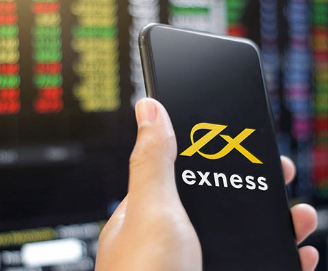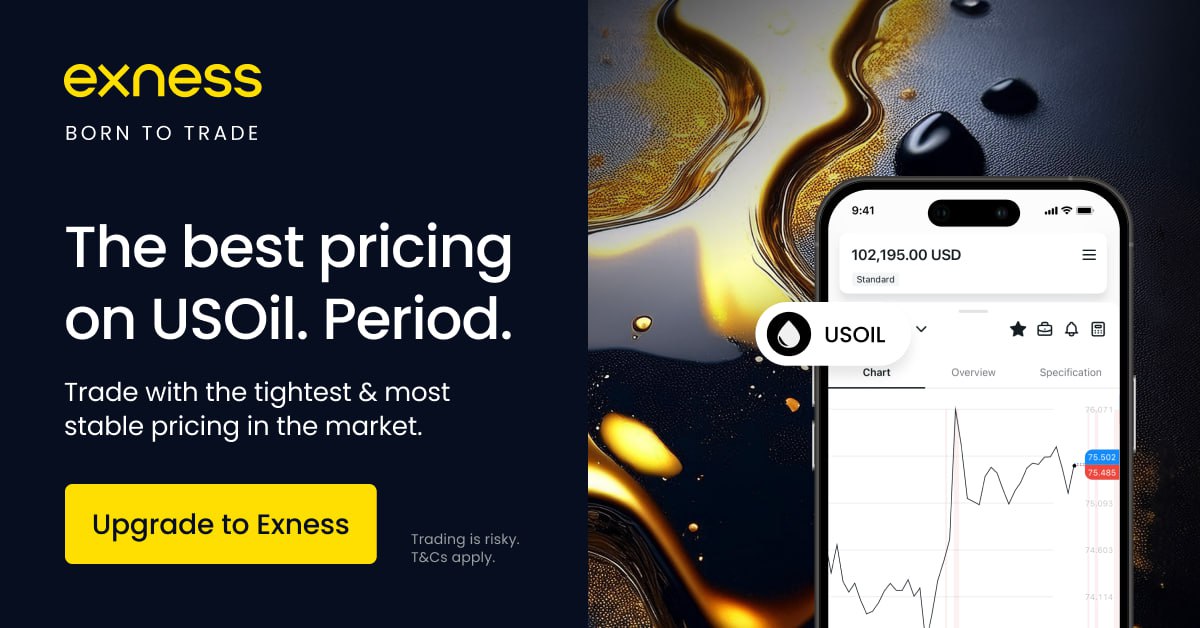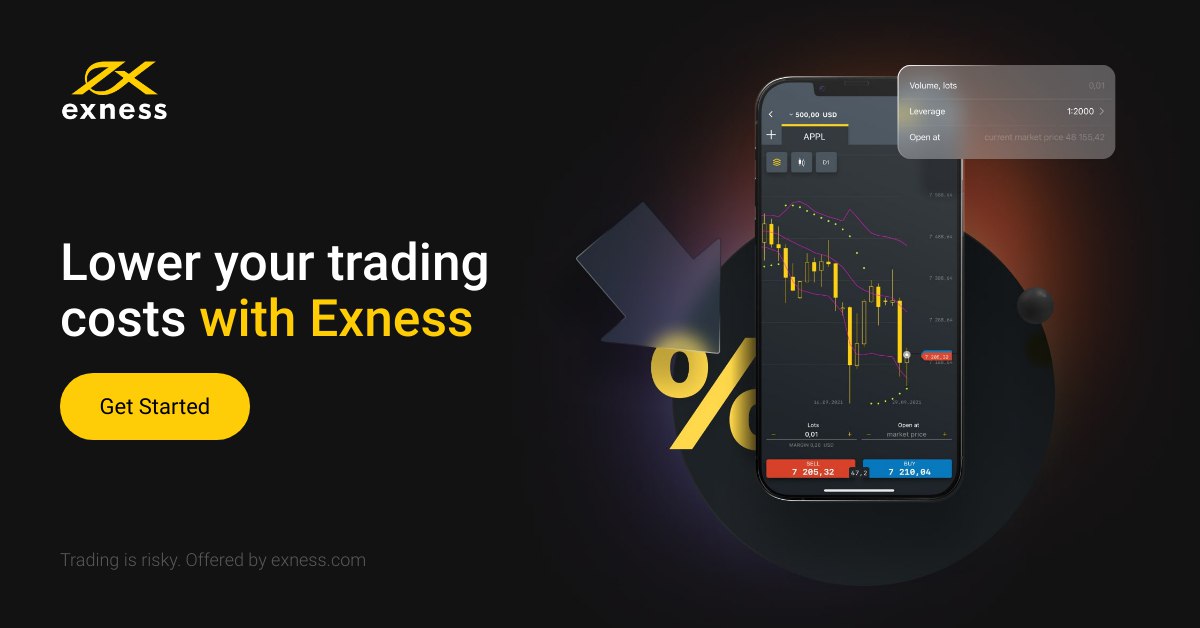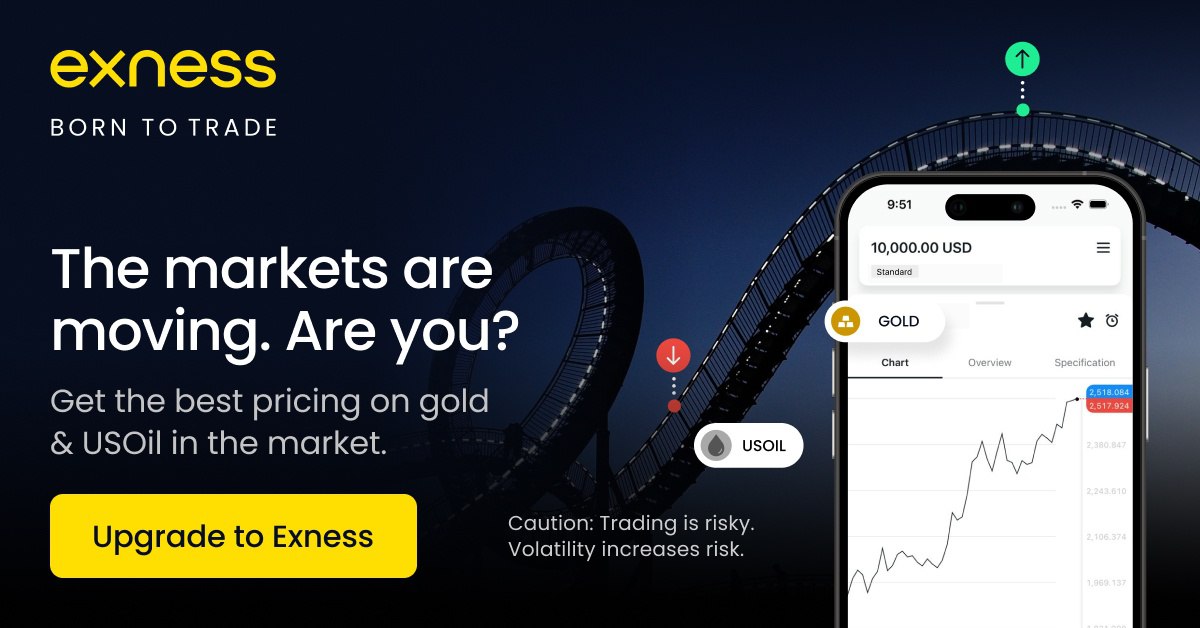
15 minute read
How Much Leverage Does Exness Give
When it comes to trading in the financial markets, one of the most intriguing aspects that traders often seek to understand is how much leverage does Exness give. Leverage is a powerful tool that can amplify both profits and losses, making it essential for traders to comprehend its implications fully. This article delves into various facets of leverage offered by Exness, providing a comprehensive guide on how to navigate this crucial aspect of trading.
👉 Visit Website Exness Official ✅

💥 Learn more: Exness broker reviews
Understanding Exness Leverage: A Comprehensive Guide
Leverage, fundamentally, allows traders to control a larger position than their actual capital would permit. For instance, if a trader has $1,000 and uses 100:1 leverage, they could control a position worth $100,000. However, with such power comes significant responsibility and risk.
Exness is a popular brokerage service renowned for offering high leverage options. It caters to a diverse range of traders, from beginners to experienced professionals, making it an appealing choice in the forex market.
The decision on which leverage to use should not be taken lightly. Traders need to assess their risk tolerance, trading strategy, and market conditions. The flexibility provided by Exness enables traders to choose their leverage according to personal preferences and risk management strategies.
👉 Visit Website Exness Official
Types of Leverage Offered by Exness
Exness provides different types of leverage depending on the account type. Typically, the leverage can range anywhere from 1:1 to 2000:1, accommodating various trading styles and goals.
The higher the leverage ratio, the more potential profit, but also the more significant the risk. Thus, understanding the types of leverage available can help traders make informed decisions.
Understanding the specific leverage options can empower traders to customize their trading approach to align with their strategies and risk appetite.
How Leverage Works in Trading
Leverage functions by borrowing digital assets from your broker to open positions larger than your trade balance. For example, if you want to buy $10,000 worth of currency but only have $1,000, leveraging allows you to borrow $9,000 from the broker to execute the trade.
This mechanism can lead to substantial gains if the market moves favorably. However, it can also lead to significant losses if the market moves against the position. Therefore, grasping how leverage works is fundamental to successful trading, particularly for those wanting to take advantage of how much leverage Exness provide.
The Importance of Understanding Leverage
Understanding leverage is critical for any trader's success. High leverage can entice many traders due to its potential for high returns; however, it also requires rigorous risk management strategies.
Moreover, knowing how leverage interacts with market volatility can aid traders in better preparing for unexpected market movements. Ultimately, this knowledge can distinguish between a successful and a failed trading experience.

How Much Leverage Does Exness Offer? A Detailed Breakdown
When exploring the question, how much leverage does Exness offer, it's essential to look at the various account types and what they entail. Exness offers several accounts, each with varying leverage options designed to cater to the needs of different traders.
Overview of Account Types
Exness features multiple account types, including Standard, Pro, and ECN accounts, each tailored for specific trading experiences. Each account type comes with its own leverage options, enabling traders to choose the setup that best suits their style.
Standard accounts generally provide a higher leverage ratio, catering to traders who prefer flexibility in their trades. On the other hand, Pro and ECN accounts may offer lower leverage but come with reduced spreads and faster execution times.
Understanding the distinctions between these accounts can play a crucial role in optimizing trading strategies while also managing risk effectively.
👉 Visit Website Exness Official
Comparative Analysis of Leverage Ratios
The leverage ratios offered by Exness are among the highest in the industry. While some brokers limit leverage to lower ratios, Exness allows traders to utilize ratios up to 2000:1 depending on the account type and asset class. This flexibility enables traders to optimize their positions according to their risk appetite and trading objectives.
However, while high leverage can lead to amplified profits, it can also exacerbate losses. Traders must weigh the pros and cons and consider their individual circumstances when deciding the leverage ratio suitable for them.
Choosing the Right Leverage Level
Selecting the right level of leverage is akin to finding the right pair of shoes; it has to fit properly. Some traders might thrive under higher leverage due to their aggressive trading strategies, while others may find greater comfort with lower leverage to ensure stability and lower risk exposure.
Traders should evaluate their trading history, strategies, and emotional capacity to handle market fluctuations to determine the optimal leverage level. In essence, choosing the right leverage is about aligning it with personal trading goals and risk management principles.
Exness Leverage Rules and Regulations: What You Need to Know
With great leverage comes great responsibility. Knowing the rules and regulations surrounding Exness's leverage offerings is vital for traders to avoid pitfalls. Brokers like Exness operate under strict regulatory frameworks that dictate how they manage leverage.
Regulatory Framework Governing Leverage
Exness is licensed in multiple jurisdictions, and these licenses impose specific requirements on how leverage is managed. Different regions have varying constraints concerning leverage ratios, which can influence how Exness operates in those markets.
For instance, certain regions may limit leverage to protect traders and promote responsible trading practices. Being aware of these regulatory limitations can assist traders in making informed decisions regarding their leverage choices.
Risk Management Guidelines
To mitigate risks associated with high leverage, Exness encourages traders to adopt sound risk management practices. This includes setting stop-loss orders, diversifying portfolios, and using smaller position sizes to maintain a balanced approach.
Implementing such guidelines can significantly reduce exposure to catastrophic losses while maximizing profit potential. Additionally, traders are advised to continuously monitor their leveraged positions to ensure they align with their risk appetite and broader investment goals.
Implications of Over-Leveraging
Over-leveraging can lead to devastating consequences for traders. By taking on too much risk, traders expose themselves to margin calls, where they may be forced to close positions or face liquidation.
Being vigilant about the dangers of over-leveraging is crucial. This awareness can prevent traders from engaging in reckless behavior that could jeopardize their financial standing and trading careers.

Modifying Your Exness Leverage: A Step-by-Step Tutorial
Changing leverage settings on your Exness account can be a straightforward process, but it requires attention to detail. Traders may find themselves wanting to adjust leverage based on market conditions, personal trading strategies, or changes in risk tolerance.
Steps to Change Leverage in Exness
To modify leverage on your Exness account, begin by logging into your client area. Once logged in, navigate to the "Accounts" section.
From there, select the specific trading account whose leverage settings you wish to change. Click on the "Change leverage" option, select your desired leverage ratio from the dropdown menu, and confirm your selection.
It’s important to note that changes to leverage can take effect almost immediately, allowing traders to adapt quickly to emerging market opportunities.
👉 Visit Website Exness Official
Considerations Before Changing Leverage
Before adjusting leverage, traders should reflect upon their overall trading plan and risk management strategy. Increasing leverage can magnify gains but also increase exposure to loss.
As such, carrying out a thorough analysis of current market conditions and one’s trading performance is advisable before making changes. A measured approach can help ensure that modifications serve to enhance trading performance rather than introduce unnecessary risk.
Testing New Leverage Settings
After altering leverage settings, it’s often beneficial to test them in a demo environment before committing real funds. Utilizing Exness's demo account allows traders to practice with new leverage levels without the risk of losing money.
Through simulated trading, traders gain insights into how different leverage setups influence trading outcomes, enabling them to make data-driven adjustments in their live accounts.
Exness's Revenue Model: How Does the Broker Generate Profit?
To understand the comprehensive picture of Exness's business operations, it is essential to explore how does Exness make money. Like many brokerage firms, Exness employs a combination of revenue streams that enable sustainable growth and profitability.
Spread and Commission Structure
Exness primarily generates revenue through spreads and commissions on trades. A spread is the difference between the buying and selling prices of an asset.
For instance, when a trader executes a trade, Exness collects a small fee from the spread. This model benefits traders who prefer tight spreads and low commission costs, as Exness often offers competitive rates based on the account type and trading volume.
👉 Visit Website Exness Official
Swap Fees and Overnight Positions
In addition to spreads, Exness may charge swap fees on overnight positions. These fees apply to trades held open past the daily settlement time.
Understanding these charges is crucial for traders who intend to hold positions long-term. By factoring in potential swap fees, traders can better calculate their overall trading costs and strategize accordingly.
Volume-Based Incentives
Exness also incentivizes traders through volume-based commissions. As trading volume increases, commissions typically decrease. This model encourages active trading, benefiting both the broker and the trader.
Traders should remain cognizant of their trading habits and how they align with Exness's commission structure, ensuring they’re maximizing their trading potential while minimizing costs.

Exness Bonuses and Promotions: An Examination of Available Offers
Another appealing aspect of trading with Exness is the availability of bonuses and promotions. Many traders wonder, does Exness have bonus incentives that can enhance their trading experience?
Types of Bonuses Offered by Exness
Exness runs various promotional campaigns that include deposit bonuses, loyalty rewards, and referral programs. Deposit bonuses provide traders with additional funds based on their initial deposits, allowing for increased trading capacity.
Loyalty rewards often present benefits to long-term clients, fostering a strong relationship between the trader and the broker. Referral programs encourage existing users to invite friends to the platform, earning both parties monetary rewards.
👉 Visit Website Exness Official
Terms and Conditions
While bonuses can serve as valuable tools for enhancing trading capabilities, understanding the terms and conditions attached is crucial. Each promotion may come with specific withdrawal requirements or trading volume thresholds that must be met before funds can be accessed.
Reviewing these details ensures traders enter into agreements fully informed and prepared to meet any stipulations that may impact their trading strategy.
Evaluating Bonus Effectiveness
Lastly, traders should evaluate the effectiveness of any bonuses received. Are they translating into increased trading success? Or do they lead to risky trading behaviors?
By assessing the overall impact of bonuses on trading performance, traders can develop a clear framework for whether or not to actively pursue such promotions in the future.
The Risks and Rewards of High Leverage Trading with Exness
High leverage can present both immense opportunities and significant challenges. Understanding the risks and rewards involved can help traders navigate this complex landscape effectively.
Potential Rewards of High Leverage Trading
Utilizing high leverage can yield considerable profits, particularly in fast-moving markets. Successful trades can result in amplified gains, allowing traders to achieve their financial goals more rapidly than they might with lower leverage options.
Additionally, high leverage allows traders to diversify their portfolios without requiring a substantial capital outlay. This flexibility facilitates access to various financial instruments, promoting a more balanced investment approach.
Risks Associated with High Leverage
Conversely, high leverage poses considerable risks. Losses can accumulate as quickly as profits, leading to swift account depletion. Margin calls are another looming threat; should account balances fall below a certain level, brokers can liquidate positions to recover their funds.
Recognizing these risks is vital for traders aiming to succeed in high-leverage environments. Developing robust risk management strategies is key to safeguarding capital while maximizing potential returns.
👉 Visit Website Exness Official
Balancing Risk and Reward
Ultimately, successfully navigating leverage demands a careful balance between risk and reward. Traders must cultivate a disciplined approach, maintaining a clear understanding of their risk tolerance and employing effective strategies to manage their exposure.
Emphasizing risk management will enable traders to harness the benefits of high leverage while mitigating the dangers inherent in elevated trading scenarios.

Exness Leverage and Interest Charges: Understanding the Costs
A common concern for traders revolves around potential interest charges associated with leverage. Many traders ask, does Exness charge interest on leverage? Let’s explore the costs linked to leveraging trades within this brokerage.
Understanding Interest on Leveraged Positions
Interest fees typically arise when traders hold leveraged positions overnight. This expense, known as the swap rate, varies based on the asset being traded and the specific account type.
Traders should examine the swap rates applicable to their preferred instruments to avoid surprises in trading costs. Many brokers, including Exness, provide a detailed breakdown of their swap rates, enabling traders to make informed decisions.
Factors Influencing Interest Charges
Interest charges can fluctuate based on several factors, including prevailing market conditions, central bank interest rates, and geopolitical events.
Understanding these variables can help traders anticipate potential shifts in swap rates and adjust their trading strategies accordingly. Staying informed about macroeconomic developments fosters a proactive approach to managing trading expenses.
Strategies to Minimize Interest Expenses
To minimize interest costs, traders may consider closing positions before the daily rollover period or opting for accounts that offer swap-free options.
Developing a tailored strategy for handling interest charges can further improve overall trading profitability. Utilizing resources available through Exness can empower traders to navigate these financial intricacies with confidence.
👉 Visit Website Exness Official
Leverage and Risk Management Strategies for Exness Traders
Effective risk management is the cornerstone of successful trading, especially when utilizing leverage. Traders must devise strategies to safeguard their investments while maximizing return potential.
The Role of Stop-Loss Orders
One of the most vital risk management tools is the stop-loss order, which automatically closes a position when it reaches a predetermined price.
Implementing stop-loss orders allows traders to limit potential losses while maintaining exposure to profitable trades. Establishing appropriate stop-loss levels is essential, factoring in market volatility and personal risk tolerance.
Position Sizing Techniques
Position sizing refers to determining the quantity of an asset to trade based on account size and risk appetite. Properly sizing positions can prevent excessive exposure to any single trade, bolstering overall portfolio resilience.
Techniques such as the Kelly Criterion or the fixed percentage method can guide traders in establishing position sizes aligned with their overall risk management strategies.
Diversification for Risk Mitigation
Diversifying a trading portfolio across multiple assets can help minimize risk and volatility. By spreading investments across various asset classes, traders reduce reliance on a single market outcome.
This diversification strategy can enhance the likelihood of achieving consistent returns while lowering the impact of adverse market movements.

Exness Leverage vs. Other Brokers: A Comparative Analysis
In the competitive world of online forex trading, comparing the leverage options of different brokers is vital for traders seeking the best arrangements. Examining Exness leverage relative to other brokers can illuminate the benefits and drawbacks of trading with Exness.
Comparison of Leverage Levels
While many brokers offer leverage options, Exness stands out with ratios reaching up to 2000:1. This flexibility allows traders to tailor their approach based on their individual risk profiles.
In contrast, some competing brokers may impose lower leverage limits, which can restrict flexibility and trading potential. Understanding these differences empowers traders to assess which broker best aligns with their trading aspirations.
Trading Costs and Conditions
Beyond leverage, evaluating the overall trading costs—including spreads, commissions, and swap rates—can inform a trader's choice of broker. Exness is known for its competitive spreads and low commission structures, positioning it favorably against other platforms.
Analyzing these costs alongside leverage options enables traders to comprehensively evaluate a broker's value proposition.
Customer Support and Resources
Access to quality customer support and educational resources can significantly influence a trader's experience. Exness is recognized for its robust customer support team and extensive educational materials.
When juxtaposed with other brokers, this dedication to customer care can enhance the overall trading journey, making Exness an attractive option for both novice and skilled traders alike.
Conclusion
Navigating the world of trading necessitates a deep understanding of leverage and its implications. Through this comprehensive guide, we've explored the various dimensions of how much leverage does Exness give and the multifaceted nature of leveraging in trading.
From understanding different account types and modifying leverage settings to discussing the inherent risks and rewards, this article has endeavored to equip traders with essential insights into leveraging with Exness.
Ultimately, successful trading hinges on balancing the benefits of leverage with sound risk management strategies. By integrating the knowledge gained here, traders can optimize their trading approaches while minimizing exposure to potential pitfalls.
💥 Read more:
What is Exness go app? Exness go trading real or fake
What is Exness Cent Account? Who is it suitable for? How to trade to be worthwhile
How to register for Exness? Complete guide

